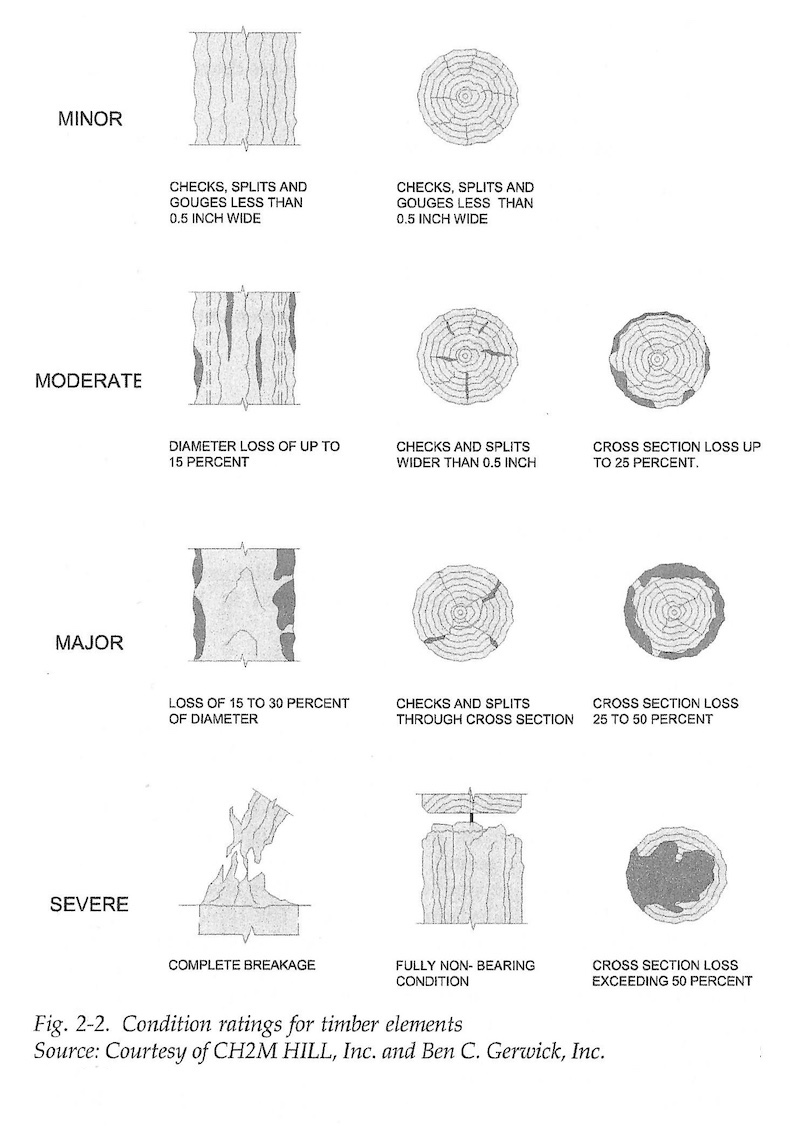Exposure to conditions that can deteriorate wood piles varies with weather intensity, water salt content (including fresh, brackish, or salt water), and the various types of insects, marine organisms and microorganisms common to the area in which the dock is located. Piles installed in saltwater require more stringent protection than piles installed in fresh water.
Sources of Damage
Environmental Damage
WDO:
Wood damaging organisms (WDO) include both marine borers (vary with location), Some of which can create the majority of damage inside the pile where it isn't visible, and crustaceans
Mollusks:
A very common type is the shipworm, a type of mollusk. In some shipworm species, a female can discharge as much as 100 million eggs, so this problem can spread quickly under the right conditions. Which species are present varies with salinity and temperature. Boring clams can damage not just wood pilings but even concrete and stone!
Crustaceans:
Three types of crustaceans, generally called Gribbles, attack pilings, and can penetrate creosote-treated pilings.
Sun, Wakes, Waves, and Precipitation
UV radiation from sunlight slowly deteriorates wood cells, which are then further damaged by precipitation and wake or wave action.
Waves and boat wakes can erode wood that has been damaged by UV, but wood that has been softened by marine borers can be worn away more quickly. Hourglass shaped damage at the water line indicates wood erosion by wake and wave action.
Damage by Zone
The following series of photos are of the same pile removed from a brackish, tidal river in Virginia (Chickahominy River) approximately 50 miles from the coast. (photos courtesy of Jeremy Winn)
Buried Zone
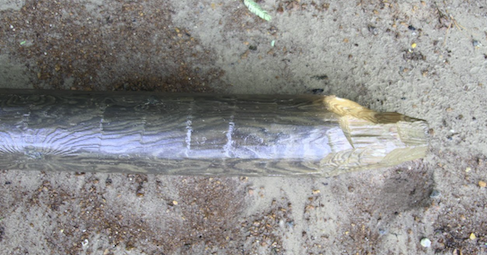
Portions of wood piles that are buried in the bottom are typically in good condition because the lack of oxygen limits or prevents attack by wood destroying organisms (WDO)
Submerged Zone
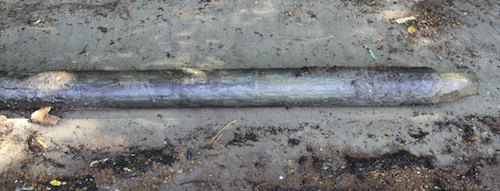
This photo shows both the buried zone and the submerged zone with little visible difference. Portions of wood piles that are submerged may also show little damage because of the limited amount of oxygen in the water compared to oxygen levels in the intertidal or splash zone.
Intertidal/Splash Zone
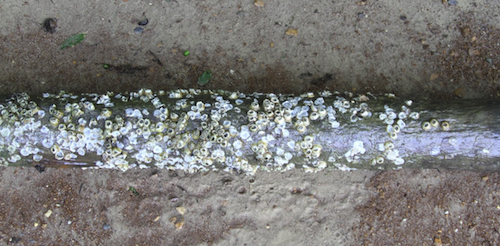
The increased amount of oxygen in the intertidal and splash zones promotes attack by WDO. Barnacles are not particularly damaging...
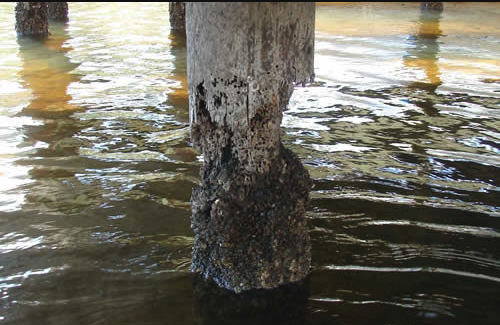
...but the same can't be said for WDO found in other environments (from a different dock)!
Atmospheric Zone
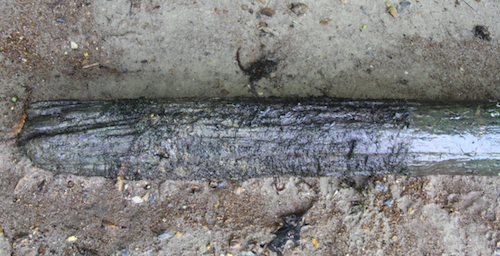
Above water portions of piles are more likely to suffer damage from decay fungi.

This photo shows both the intertidal/splash zones and the above water portions of the pile. Although the decay was easily visible here...
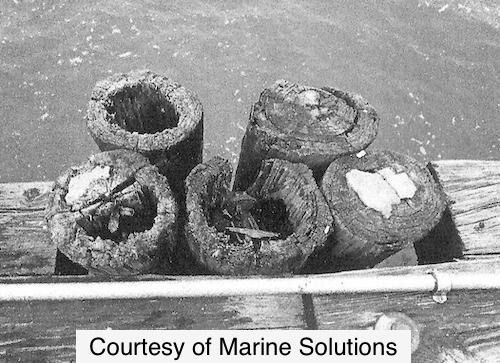
That's not always the case!
Other Types of Damage
Ice damage
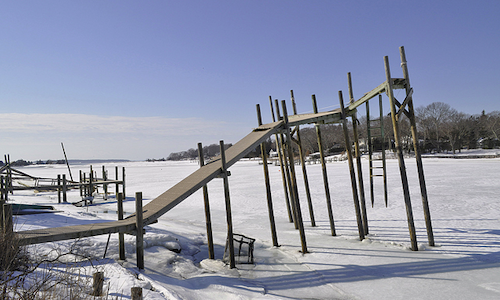
Ice can damage docks by lifting piles...
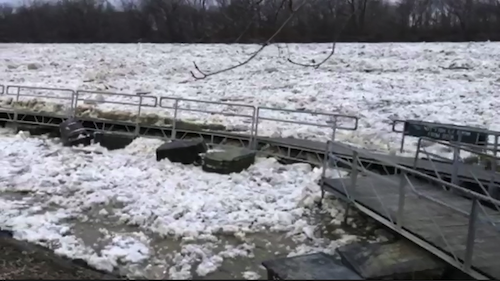
...or ice may be pushed by wind or currents against a dock.
Impact Damage
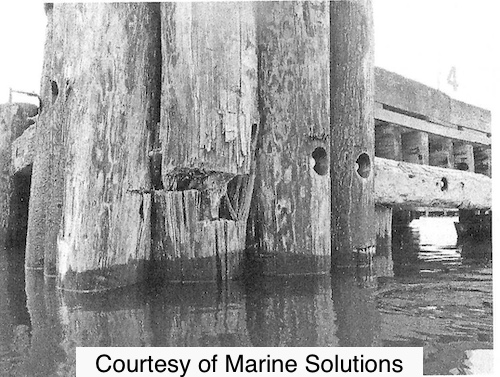
Impact by boats, barges or other watercraft may damage piles. These are fender piles installed to protect the dock from impact.
Methods of Protection
The most common methods of protecting wood piles are by treating them with chemicals that discourage wood-destroying organisms (WDO), or by encapsulating them in plastic or polymer coatings, or concrete.
Chemical Treatment
The chemical pressure-treatment of wood pilings helps provide protection against WDO like decay fungi and marine borers. The outer layer of the wood is injected under pressure with a chemical preservative to help create a protective envelope around the heartwood (the inner part of the timber). The effectiveness of the treatment depends on how deeply the treatment penetrates into the wood and how well the wood retains the chemicals Different conditions can require different treatment strengths
Wood treatments generally fall into 5 classifications with graduated levels of protection. Inspectors will typically not know which treatment classification has been used on the piles they inspect, but will be looking for deterioration indicating that piles with treatment inadequate for the environment in which they were installed have been used.
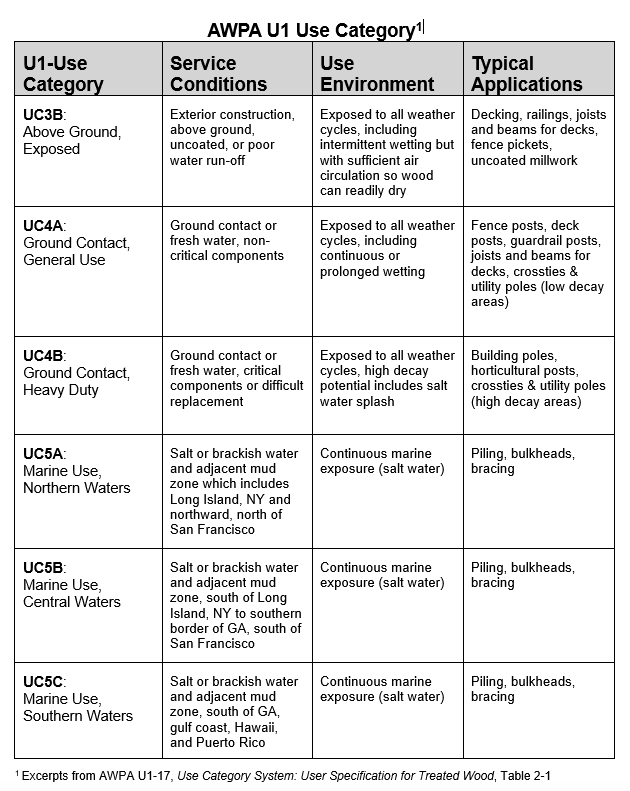

Square piles may have some heartwood exposed to water. Heartwood does not accept treatment chemicals well.
Encapsulation
Wood piles may be encapsulated using a variety of methods.
Polymer Coating

Pile Sleeve:
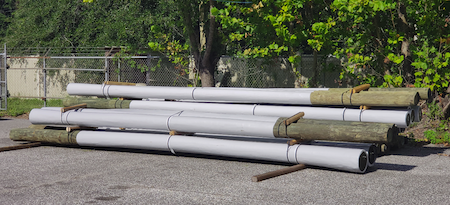
Pile sleeves consist of a PVC coating that is heat-shrunk onto the pole at the lumber yard. This coating completely covers the pile and ensures that water never contacts the wood, preventing damage from UV, marine boring organisms, and decay fungi. Pile sleeves must be installed before the piles are placed and are the most complete form of protection.
Pile Wrap:
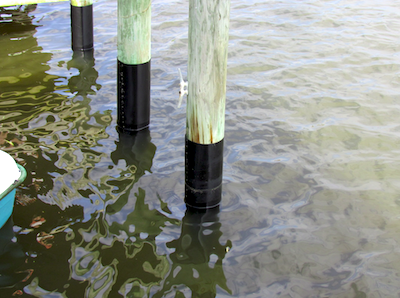
Once piles are embedded, they can still be protected using pile wrap. Pile wrap must be installed on clean piles and consists of black vinyl sheeting, wrapped around the piles and secured. To help keep wood from contacting water, the vinyl is installed from just below the mud line to just above the high-water mark. Pile wrap protects against marine borers, UV deterioration, and decay, lengthening pile service life. It can be installed on damaged piles as well as new piles. It should be installed by a qualified contractor.
Jacketing:

Pilings that have suffered damage not serious enough to require replacement can have their service life extended by jacketing. A jacket is created by surrounding the existing pile with a plastic casing that acts as a concrete form. Concrete is poured into the casing, where it provides additional structural support to the pile. The plastic is left in place to provide additional protection (concrete is porous).
Pile caps:
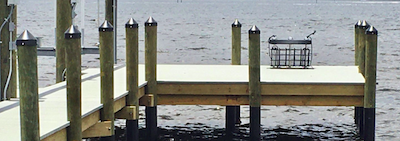
End grain is more absorbent than the outer surface of a pile. Protecting pile tops with a waterproof cap helps prevent core decay from developing inside the pile. Core decay can significantly weaken a pile with no visual indication. Caps can also discourage birds from roosting, soiling docks with droppings.
Describing Damage
Approaches to describing damage varies among inspectors. The main objection to providing levels of description like minor, moderate, and severe is that these terms are open to interpretation. For those wanting to provide clients with a more detailed description of damage, charts have been produced:
